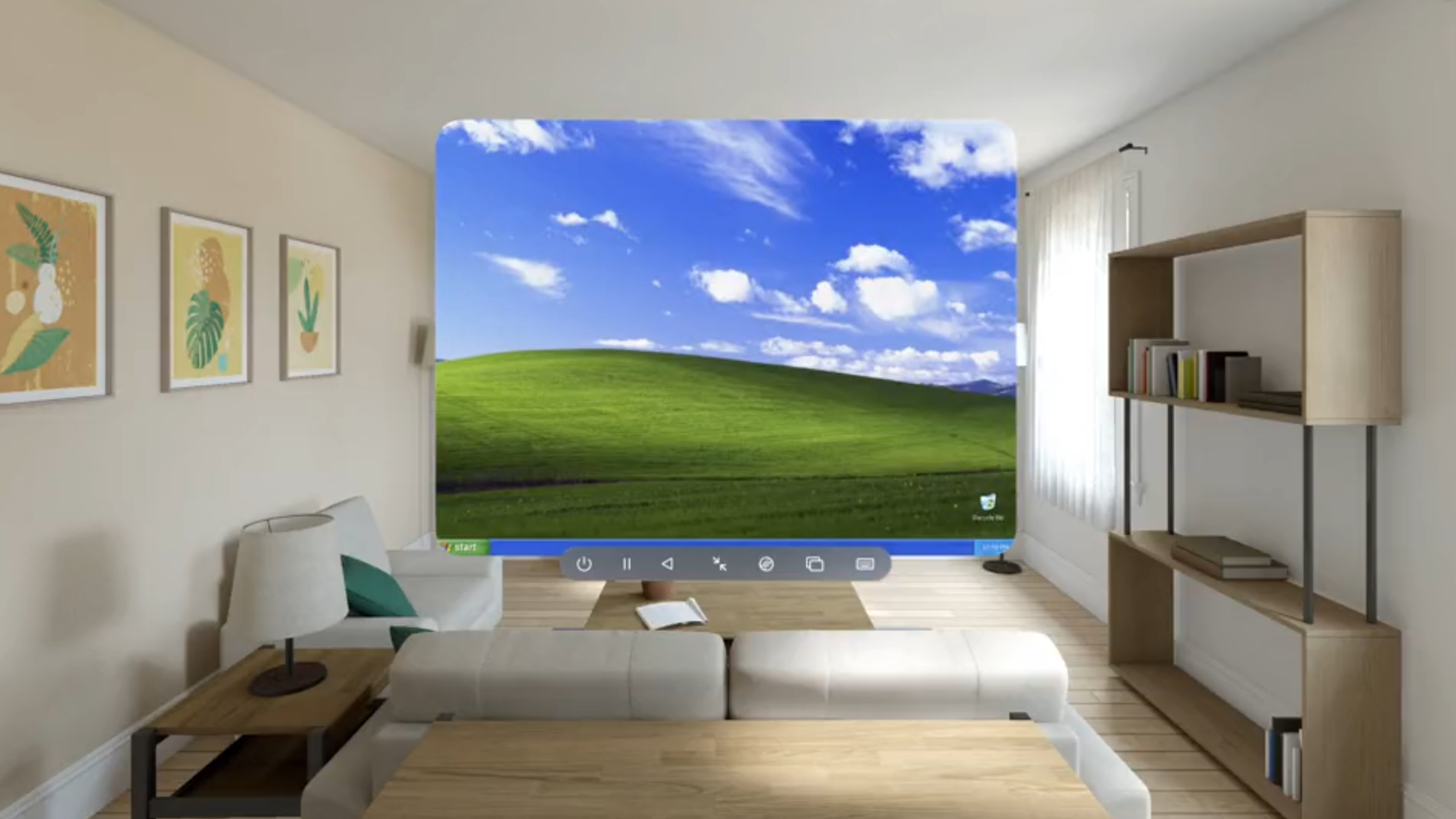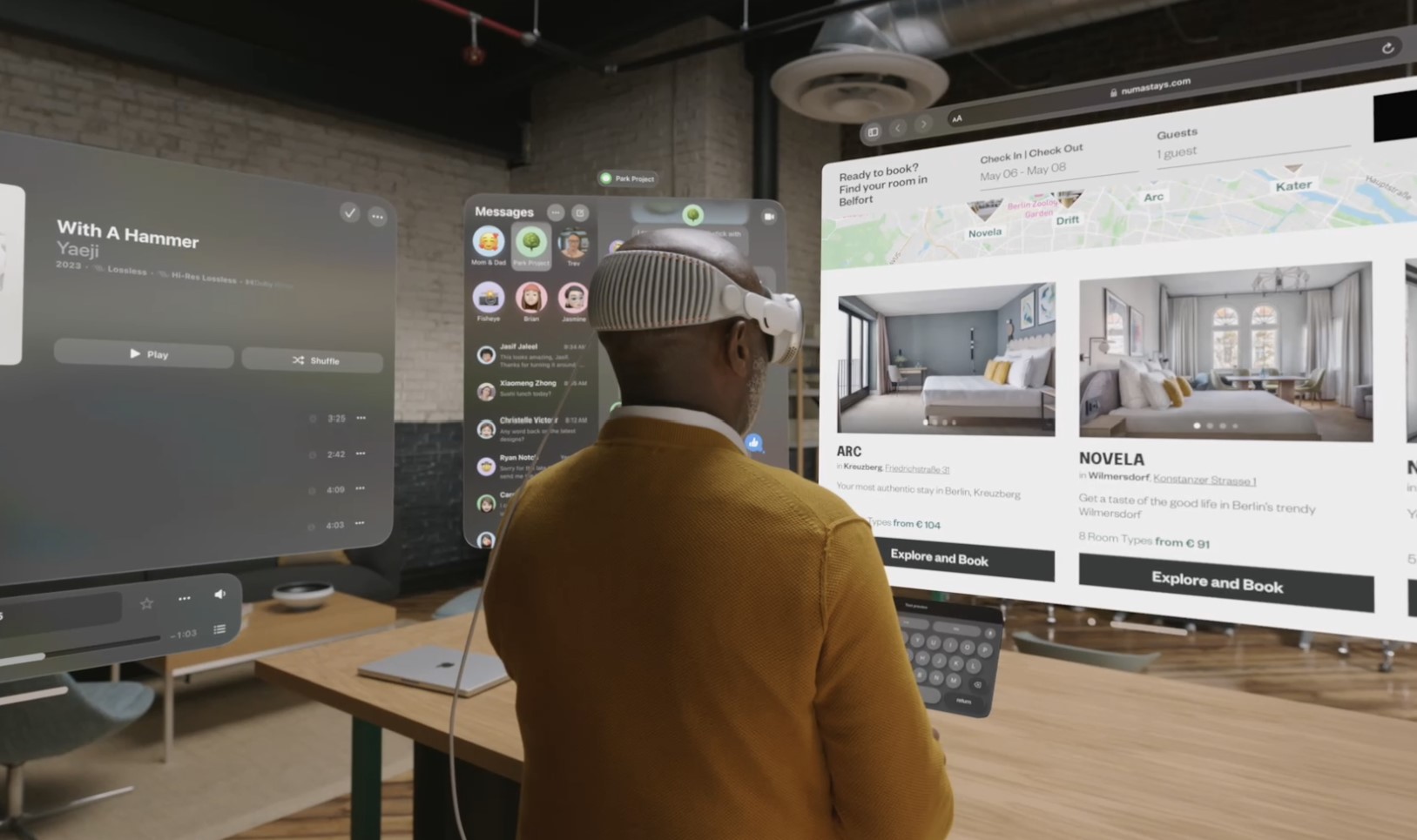Apple Vision Pro’s killer app could be… Windows XP?!
Apple Vision Pro could fill your house with Windows XP

When the Apple Vision Pro, the powerful and ultra-expensive VR headset, was shown off by CEO Tim Cook at WWDC 2023, few (if any) of us expected one of the most interesting showcases for the new tech to be running the ability to run a Windows operating system by arch nemesis Microsoft – especially one that was first released back in 2001. But you know what? It actually is.
As 9to5Mac reports (via iPhoneSoft), developers working on an early version of the visionOS operating system that the Vision Pro will run on, have managed to get an emulator running with a working version of Windows XP.
In a video posted on X, the social media network formerly known as Twitter, which you can see below, Windows XP is shown loading in a big floating window in a lounge.
UTM is now running on Vision Pro (simulator)! Still need to implement input devices but here's a sneak peek. pic.twitter.com/xYnSgTdXpiAugust 8, 2023
Room with a view
While Windows XP is regarded as one of the better versions of Microsoft’s operating system, the idea of it looming over you as you sit on your couch may seem like some sort of dystopian nightmare, but this is actually pretty cool.
Sure, it’s unlikely that I’d want to fire up Windows XP to play some Minesweeper on a virtual 100-inch screen, this is an exciting demonstration on what could be possible for Vision Pro.
The developers are working on UTM, an emulator that brings non-Apple software to iPhones, Macs and now, it seems, the Vision Pro.
This emulation isn’t yet perfect – there isn’t a way to control Windows XP when it’s running – but the team has time to work on that before the Vision Pro’s official launch early next year.
Get daily insight, inspiration and deals in your inbox
Sign up for breaking news, reviews, opinion, top tech deals, and more.
And, while Windows XP is shown off in this video, it does suggest that this could mean other operating systems could come to Vision Pro. This would open up huge possibilities, as you’d be able to run full programs and games on the headset.

Killer app? Perhaps
One of the major questions many people – including myself – had when Apple showed off the Vision Pro, was what is the headset actually for? We were shown some concept videos of people making video calls and watching movies using the headset, but nothing that really justified the huge $3,499 (around £2,815 / AU$5,290) price tag that it will launch with.
What we need is a killer app that makes the Vision Pro a must-by. So far, we’ve not had that, but an app that allows an almost unlimited amount of applications could be the key – and would also showcase Apple’s vision for ‘spatial computing’, which is how the company refers to the tech powering the Vision Pro – which includes hardware such as the same M2 chip found in the best MacBooks, and the new R1 chip.
The UTM app is certainly exciting, but I wouldn’t get too excited just yet. As you may imagine, Apple won’t be too keen on people running non-Apple software on the Vision Pro, so don’t expect installing UTM on the headset to be as straightforward as downloading it from the built-in app store.
It would be a shame if Apple hobbled the Vision Pro’s potential by forcing a walled-garden approach to apps, like on the iPhone, where you can only officially install apps from Apple’s own store, unlike the more open approach on Macs and Windows laptops.
If Apple is serious about the Vision Pro being a productivity machine and the dawn of ‘spatial computing’, then it’s going to have to be willing to give up some control – and it may not want to do that.

Matt is TechRadar's Managing Editor for Core Tech, looking after computing and mobile technology. Having written for a number of publications such as PC Plus, PC Format, T3 and Linux Format, there's no aspect of technology that Matt isn't passionate about, especially computing and PC gaming. He’s personally reviewed and used most of the laptops in our best laptops guide - and since joining TechRadar in 2014, he's reviewed over 250 laptops and computing accessories personally.